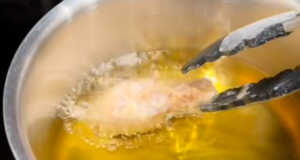On Tuesday, America will face its 2020 presidential election. And no matter which side of history you might fall on with your choice of candidate, there is no denying that this year’s election will be a significant one. As an expat living overseas, I got to vote using the mail-in ballot system. It’s how many Americans this year will most likely be voting, whether they’re stateside or not. A global pandemic tends to do that. But there are some Americans who are a little further away and can’t quite take advantage of the normal postal system on Earth. And that would be the American astronauts up in the International Space Station.
However, as NASA explained, astronaut Kate Rubins was still able to cast her vote through a makeshift voting booth aboard the International Space Station. But it wasn’t sent back to the Earth through a rocket, instead, she was able to email it to her county clerk’s office as a PDF. For astronauts up in space, their absentee voting is quite similar to that of other Americans living overseas. They have to go through the same process of first submitting a Federal Postcard Application (FPCA) to request an absentee ballot. Then, once that has been approved, the astronaut’s county clerk completes a practice run with the Johnson Space Center in Houston, before they can send it off to the astronaut in space.
https://www.facebook.com/ABCNews/photos/a.10150095914943812/10160352794658812
The astronaut can expect to receive two electronic documents. One is a password-protected ballot sent by the Space Center’s mission control center, while the other is an email with the password sent by the county clerk. The astronaut can then fill out their ballot before returning it via satellite signal to the Space Center employees who will then forward it over to the county clerk’s office. Given that the county clerk issued the password, they’re the only other ones who are able to see the astronaut’s vote. And NPR reports that the final step is for the county clerk’s office to then copy the astronaut’s responses over to a regular ballot form and submit them with the other votes.
While Americans have been going to space since the 1960s, it wasn’t until the 1990s when it became possible for them to vote from space. It wasn’t because the technology wasn’t there, it’s just that the laws weren’t in place. But then, as The Washington Post explained, NASA collaborated with Texas lawmakers to make it legal for astronauts to be able to cast their votes from space. And it was in 1997 when David Wolf became the first astronaut to vote from space.
Quite a fascinating history of voting from beyond this world. Let’s see how voting absentee will work once a Mars colony gets established.












